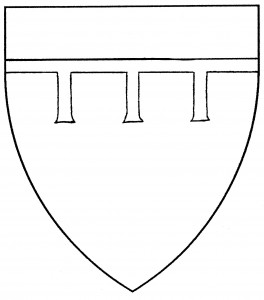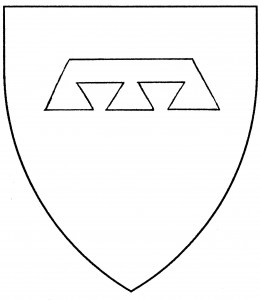The label is an ancient charge, dating from early heraldic records, c.1244 [Asp2 220]. It consists of a horizontal stripe with several short dags (called “points”) dependent from its lower edge.
By default the label is in chief, throughout, and of three points. This form of label, the label throughout, was the earliest form of the charge, and remains the most common. However, the label’s form varied as time passed, with the points sometimes being drawn splayed, and sometimes with the label not throughout. This more compact form has been blazoned in the Society as a “label dovetailed” or a “label couped”. Current Society practice is to treat both forms of label as artistic variation, and to not blazon the precise form.
The label was recognized throughout Europe as the brisure of the eldest son. However, there are examples (in both period and Society armory) of its use as an independent charge, with no cadency intended: e.g., the arms of Woldenberg, c.1370 [Gelre 45v].
Seamus Ruadh bears: Gules ermined Or, a label argent.
Cei Myghchaell Wellinton bears: Per pale Or and bendy gules and ermine, a label sable.
Valentino da Siena bears: Per pale sable and Or, in pale three labels couped counterchanged.

